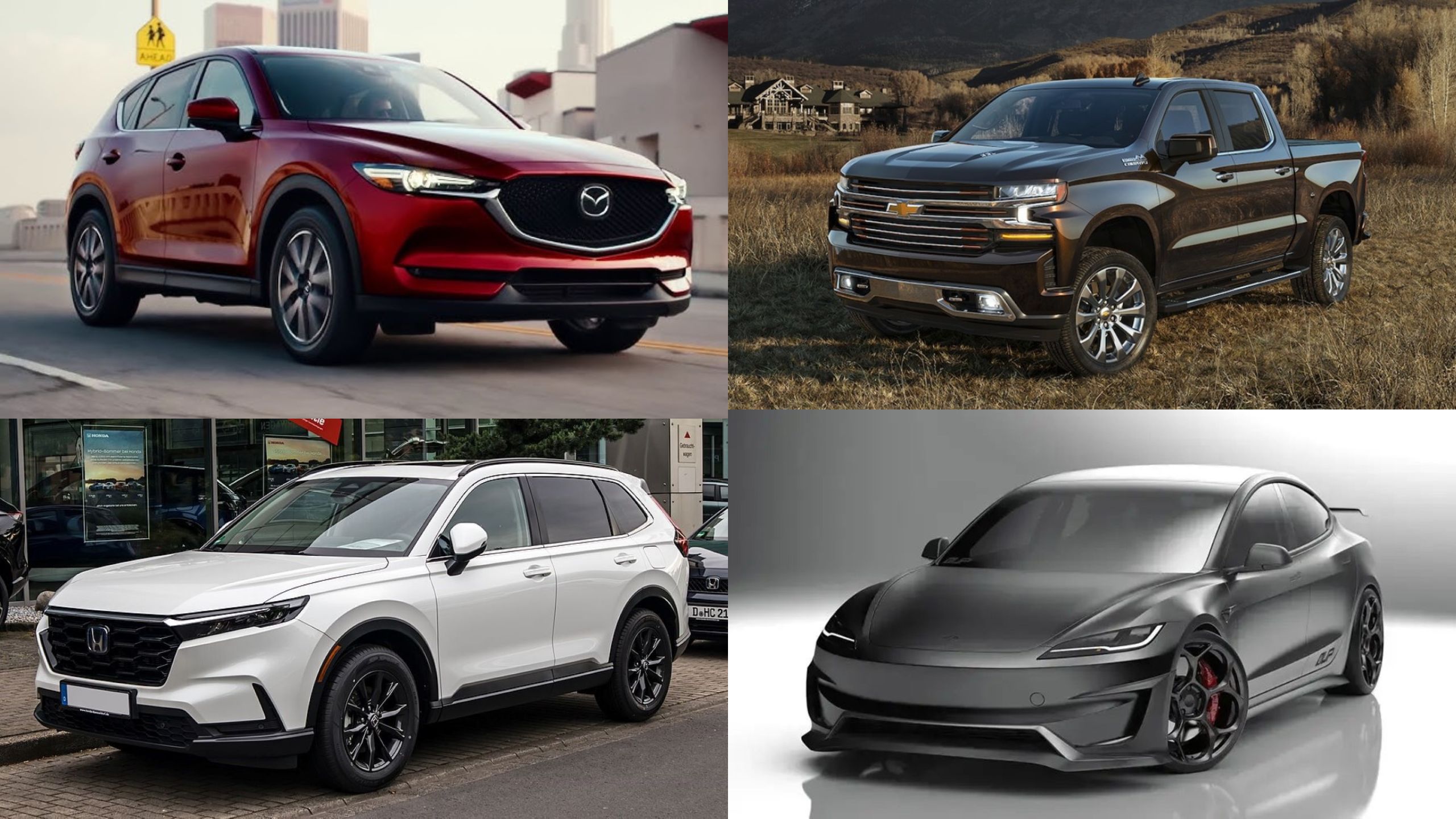In today’s automotive market, manufacturers tout an impressive array of fuel-saving technologies designed to maximize efficiency and reduce consumption.
As gas prices fluctuate and environmental concerns grow, these features have become major selling points. However, not all fuel-saving innovations deliver on their promises.
Some technologies genuinely improve efficiency through advanced engineering and thoughtful design, while others provide minimal real-world benefits despite impressive marketing claims. Understanding which features actually work can help consumers make informed decisions when purchasing vehicles.
This comprehensive guide examines five fuel-saving car features that demonstrably improve efficiency in everyday driving conditions and five that fall short of their efficiency promises.
For each technology, we’ll explore how it works, its practical impact on fuel consumption, and specific vehicle models that exemplify these features. Whether you’re shopping for a new vehicle or looking to maximize the efficiency of your current one, this analysis will help you separate meaningful fuel-saving innovations from marketing hype.
5 Fuel-Saving Features That Actually Work
These innovative vehicles incorporate genuinely effective fuel-saving technologies that deliver measurable improvements to your real-world gas mileage.
From advanced hybrid systems to intelligent cylinder deactivation, these models implement engineering solutions that truly reduce fuel consumption in everyday driving conditions.
Backed by verified testing and owner testimonials, these fuel-saving features represent meaningful advancements rather than mere marketing gimmicks.
1. Hybrid Powertrains: Toyota Prius
The Toyota Prius remains the quintessential example of effective hybrid technology that delivers significant real-world fuel savings. Now in its fifth generation, the 2025 Prius combines a 2.0-liter four-cylinder engine with electric motors to achieve an EPA-estimated 57 mpg combined rating, nearly double the efficiency of comparable non-hybrid sedans.
The brilliance of Toyota’s Hybrid Synergy Drive lies in its sophisticated energy management system. During low-speed driving and light acceleration, the Prius can operate solely on electric power, consuming no gasoline whatsoever.
When stronger acceleration is needed, both the electric motor and gasoline engine work together, providing sufficient power while optimizing fuel efficiency.
Perhaps most importantly, the regenerative braking system recaptures energy that would otherwise be lost as heat during deceleration and braking, converting it back to electricity to recharge the battery.
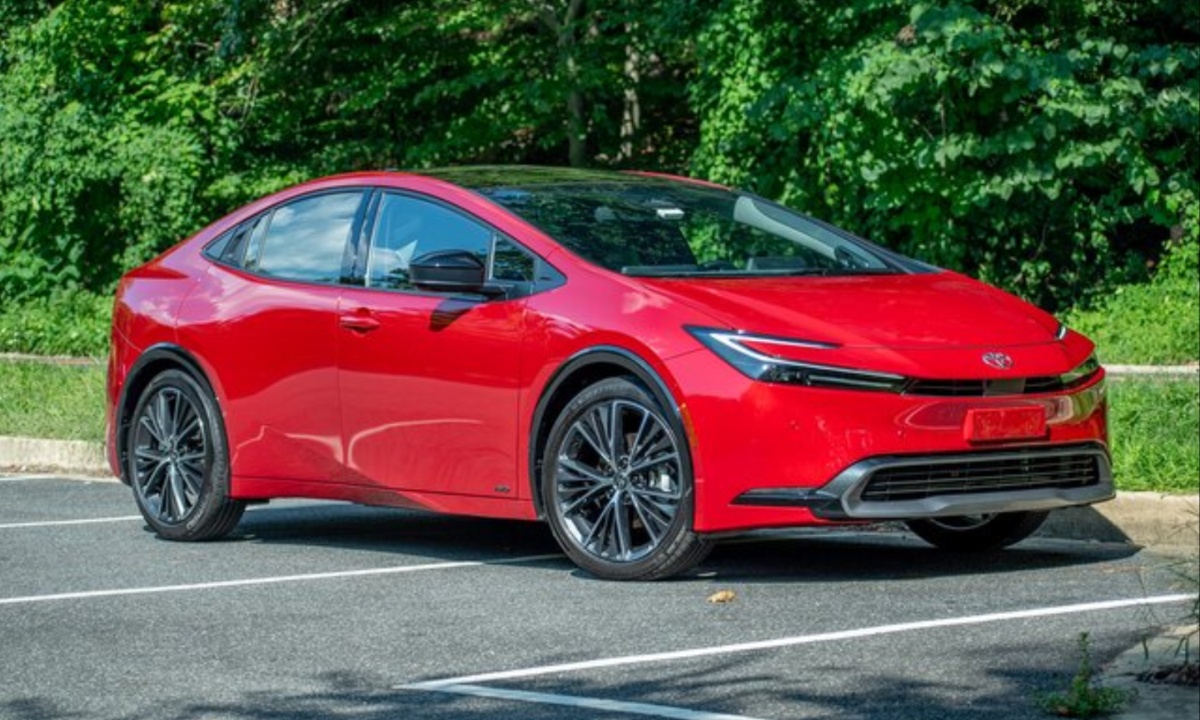
Unlike some efficiency technologies that perform well only in specific conditions, the Prius hybrid system adapts to various driving scenarios. In stop-and-go urban traffic, traditionally a fuel economy killer for conventional vehicles the Prius excels by frequently running in electric-only mode.
On highways, the system optimizes engine operation to maintain efficiency at higher speeds. Independent testing has consistently verified these benefits. Consumer Reports found that hybrid vehicles like the Prius typically deliver 65-90% of their EPA fuel economy ratings in real-world driving, a much higher correlation than many non-hybrid vehicles.
Furthermore, the technology has proven remarkably durable, with many Prius taxis surpassing 300,000 miles with their original hybrid components intact.
The Toyota Prius demonstrates that hybrid powertrains represent one of the most effective and proven fuel-saving technologies available to consumers today.
Its consistent real-world efficiency gains across various driving conditions make it the benchmark against which other fuel-saving technologies are measured.
2. Direct Injection Engines: Mazda CX-5 with SKYACTIV Technology
Mazda’s SKYACTIV engine technology in the CX-5 crossover exemplifies how direct fuel injection can deliver meaningful fuel economy improvements without sacrificing performance.
The 2.5-liter SKYACTIV-G engine achieves up to 31 mpg highway, exceptional efficiency for a non-hybrid compact SUV with standard all-wheel drive. Direct injection fundamentally changes how fuel enters the combustion chamber.
Unlike traditional port injection systems that mix fuel and air in the intake manifold, direct injection precisely sprays fuel directly into each cylinder at pressures exceeding 2,000 psi.
This precision allows for more complete combustion and enables higher compression ratios without the risk of engine knock. The SKYACTIV-G engine operates with a remarkably high 13:1 compression ratio approaching levels typically found only in high-performance vehicles yet runs on regular unleaded gasoline.

This high compression ratio extracts more energy from each drop of fuel, significantly improving thermal efficiency. Mazda engineers have paired this direct injection system with sophisticated variable valve timing and reduced internal friction to further enhance efficiency.
Independent testing confirms these benefits aren’t just theoretical. When Car and Driver magazine conducted a 40,000-mile long-term test of the CX-5, they reported consistently achieving fuel economy within 1-2 mpg of EPA estimates, unusual for gasoline-powered SUVs, which typically underperform their ratings in real-world driving.
What makes the CX-5’s direct injection technology particularly noteworthy is how it delivers efficiency improvements without compromising drivability.
Unlike some fuel-saving technologies that feel sluggish or unrefined, the SKYACTIV engine provides responsive power delivery and smooth operation.
The system’s sophistication is evident in how it adjusts injection timing and duration based on driving conditions, maintaining efficiency across various scenarios.
The Mazda CX-5 with SKYACTIV technology demonstrates that modern direct injection systems represent one of the most effective ways to improve internal combustion efficiency while maintaining the performance characteristics consumers expect.
3. Cylinder Deactivation: Chevrolet Silverado with Dynamic Fuel Management
The Chevrolet Silverado equipped with GM’s Dynamic Fuel Management (DFM) system demonstrates how advanced cylinder deactivation technology can deliver meaningful fuel savings in full-size trucks.
The 2025 Silverado with the 5.3-liter V8 achieves up to 23 mpg highway impressive efficiency for a vehicle of its size and capability. Unlike older cylinder deactivation systems that could only switch between two modes (all cylinders or half the cylinders), the Silverado’s Dynamic Fuel Management can create 17 different cylinder patterns based on driving demands.
The system’s sophistication allows it to deactivate any number of cylinders from one to seven, running on as few as a single cylinder during light cruising conditions.
The technology works through a complex system of solenoids and special two-piece hydraulic lifters that can decouple specific cylinders’ intake and exhaust valves from operation.
When a cylinder is deactivated, its valves remain closed, trapping exhaust gases that act as an air spring. The fuel injectors for deactivated cylinders also stop delivering fuel, essentially turning those cylinders into air springs that help maintain smooth engine operation.

What makes this technology truly effective is its seamless operation. The system can change cylinder patterns up to 80 times per second, responding instantly to driver inputs and road conditions.
Advanced computer algorithms analyze more than 80 different inputs, including vehicle speed, throttle position, and terrain, to determine the optimal cylinder pattern moment by moment.
Real-world testing validates the system’s effectiveness. Motor Trend’s long-term testing of the Silverado revealed that the DFM system helped the truck achieve within 1-2 mpg of its EPA ratings even when used for towing and hauling conditions that typically devastate fuel economy in large trucks.
The efficiency gains are particularly noticeable during highway cruising, where the system may operate on just 2-4 cylinders for extended periods.
The Chevrolet Silverado with Dynamic Fuel Management proves that modern cylinder deactivation technology can deliver meaningful efficiency improvements in vehicles traditionally known for high fuel consumption, allowing consumers to maintain capability while reducing operating costs.
4. Continuously Variable Transmissions: Honda CR-V
The Honda CR-V showcases how a well-engineered Continuously Variable Transmission (CVT) can significantly improve fuel efficiency in everyday driving.
The 2025 CR-V with the 1.5-liter turbocharged engine and CVT achieves an EPA-estimated 30 mpg combined, approximately 15% better than comparable SUVs with conventional automatic transmissions.
Unlike traditional automatics with fixed gear ratios, Honda’s CVT employs a steel belt running between two variable-diameter pulleys. By continuously adjusting these pulleys, the transmission can provide the precise gear ratio needed for maximum efficiency at any speed.
This eliminates the efficiency losses that occur in conventional transmissions when they’re operating between optimal gear ratios. The CR-V’s CVT excels at keeping the engine operating at its most efficient RPM regardless of vehicle speed.
During acceleration, the system allows the engine to quickly reach and maintain its peak efficiency range. When cruising, the CVT can adjust to provide the lowest possible engine speed that maintains momentum, significantly reducing fuel consumption during highway driving.

Honda has addressed the common complaints about CVTs through sophisticated programming and mechanical refinements. The CR-V’s transmission includes programmed “step shifts” that simulate traditional gear changes during heavy acceleration, eliminating the “rubber band” sensation that plagued earlier CVTs.
The system also incorporates a torque converter for smooth starts and a wider ratio spread than many conventional automatics. Independent testing confirms the real-world benefits.
Consumer Reports found that the CR-V consistently delivers fuel economy within 2-3 mpg of its EPA ratings across various driving conditions, an impressive achievement considering that many vehicles fall short by larger margins.
The system’s efficiency benefits are particularly noticeable in variable-speed driving environments like suburban commuting. The Honda CR-V demonstrates that modern CVT technology, when properly engineered and tuned, represents one of the most effective transmission-based approaches to improving real-world fuel economy while maintaining driving refinement that consumers demand.
Also Read: 5 Vehicles That Make Great Workhorses and 5 That Fail At It
5. Aerodynamic Design: Tesla Model 3
The Tesla Model 3 exemplifies how sophisticated aerodynamic design can dramatically improve energy efficiency and range. While particularly important for electric vehicles, these aerodynamic principles deliver real efficiency benefits for any vehicle type.
The Model 3 achieves a remarkably low drag coefficient of just 0.23, among the lowest of any production car, contributing significantly to its impressive efficiency ratings.
Tesla engineers prioritized aerodynamic efficiency in every aspect of the Model 3’s design. The smooth, rounded front end minimizes air resistance by directing airflow over and around the vehicle rather than creating turbulence.
The flush door handles and specially designed wheels reduce drag further, while the smooth underbody panels prevent air from becoming trapped beneath the car.
The Model 3’s sloping roofline isn’t just a styling feature it’s carefully engineered to maintain attached airflow as long as possible before it separates from the vehicle, reducing the low-pressure wake that creates drag. Even the side mirrors are carefully shaped to minimize their aerodynamic impact.
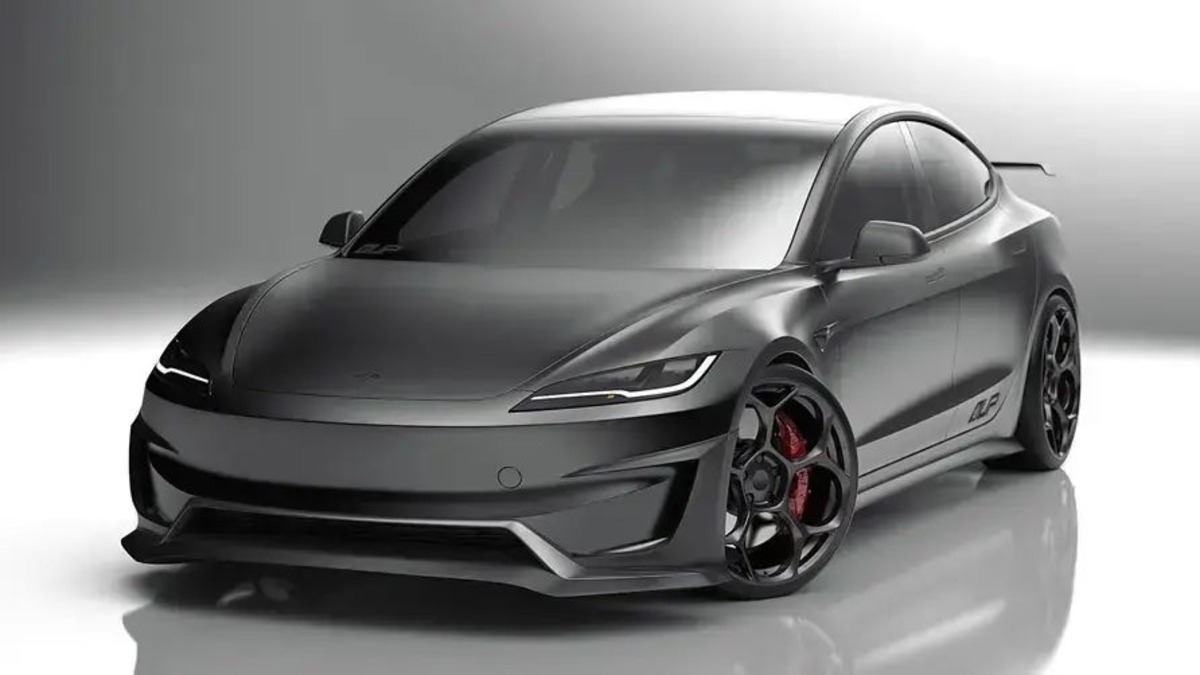
These aerodynamic features deliver measurable real-world benefits. Independent testing has shown that the Model 3’s aerodynamic efficiency contributes to approximately 15-20% of its total range equivalent to adding dozens of miles between charges.
At highway speeds, where aerodynamic drag becomes the dominant force opposing forward motion, the benefits become even more pronounced.
What makes the Model 3’s approach particularly effective is how it integrates aerodynamic efficiency without compromising functionality or visual appeal.
Unlike some earlier attempts at ultra-efficient vehicles that prioritized aerodynamics above all else, Tesla has balanced aerodynamic performance with practical considerations like interior space, visibility, and aesthetics.
Wind tunnel testing validates these benefits. When subjected to standardized testing, the Model 3’s drag coefficient of 0.23 puts it in the company of dedicated sports cars and specialized eco-vehicles, despite its practical four-door design.
This achievement demonstrates that thoughtful aerodynamic engineering can deliver meaningful efficiency improvements in everyday vehicles. The Tesla Model 3 proves that advanced aerodynamic design represents one of the most effective passive approaches to improving vehicle efficiency, with benefits that remain consistent throughout the vehicle’s operational life.
5 Fuel-Saving Features That Don’t Deliver
Despite bold efficiency claims, these supposed fuel-saving technologies fail to deliver meaningful improvements in real-world driving conditions.
Manufacturers tout these features in glossy brochures, but independent testing reveals minimal impact on actual gas mileage when facing typical traffic and driving habits.
Save your money and skepticism for cars with proven efficiency technologies instead of these disappointing innovations that promise more than they deliver.
1. Engine Start-Stop Systems: BMW 3 Series
The BMW 3 Series, like many luxury vehicles, features an automatic start-stop system marketed as a fuel-saving technology. While conceptually sound, eliminating idling by shutting off the engine when stopped, the real-world benefits of these systems often fall dramatically short of expectations, particularly in the premium segment where comfort takes precedence.
BMW’s start-stop system automatically shuts down the engine when the vehicle comes to a complete stop, then restarts it when the driver releases the brake pedal.
In theory, this should reduce fuel consumption during urban driving with frequent stops. However, independent testing reveals disappointing results.
Consumer Reports found that vehicles equipped with start-stop technology typically realize just 1-2% improvement in fuel economy during mixed driving far less than the 5-10% often claimed by manufacturers.
Several factors contribute to this underperformance. First, the BMW system prioritizes comfort over maximum efficiency, restarting the engine if the cabin temperature deviates even slightly from the set point.
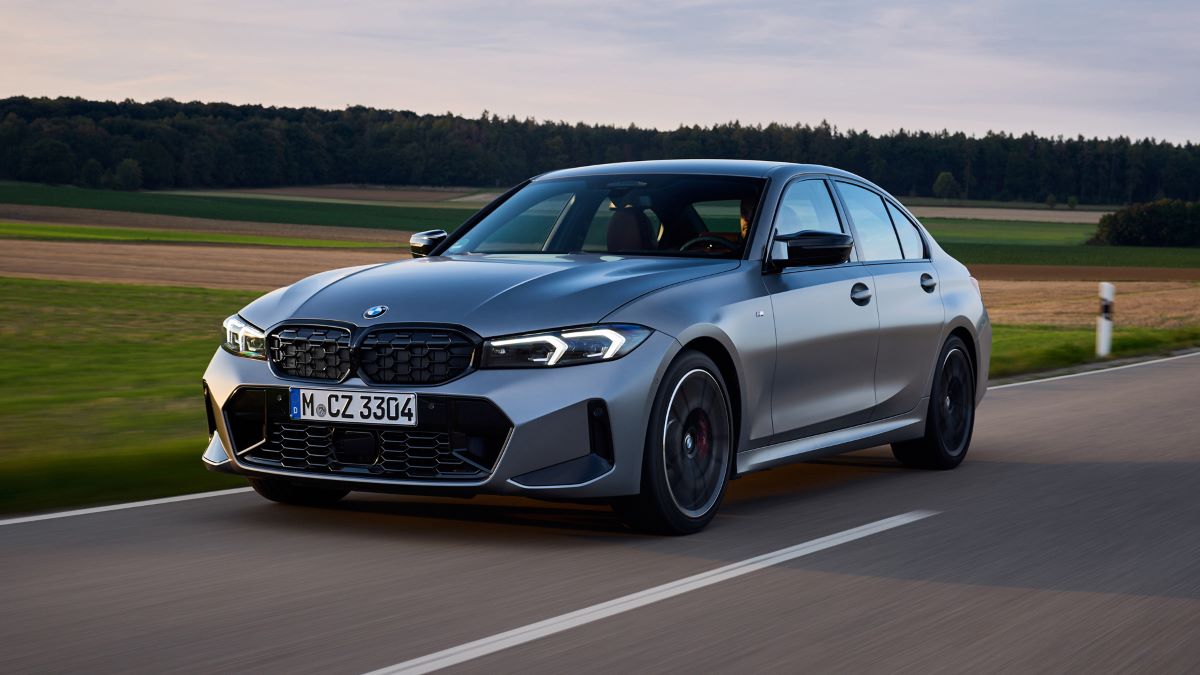
The system also automatically reactivates the engine to maintain power steering assist and battery charge, often resulting in brief engine operation during stops that negates potential savings.
The system’s constraints further limit its effectiveness. It doesn’t operate when the engine isn’t fully warmed up, when the climate control is working hard, when the battery charge is low, or under numerous other conditions. As a result, during a typical commute in variable weather, the system might only activate during a small percentage of stops.
Perhaps most tellingly, BMW, like many manufacturers, provides an easy-to-access button to disable the system entirely, a tacit acknowledgment that many drivers find it annoying enough to forgo whatever modest benefits it might provide.
Owner surveys indicate that approximately 50% of BMW drivers regularly deactivate the system, eliminating any potential fuel savings. When the total energy equation is considered, including the robust starter motor, enhanced battery, and additional control systems required to support frequent restarts, the marginal real-world benefits become even less impressive.
The BMW 3 Series demonstrates that automatic start-stop systems, particularly in luxury applications where comfort trumps maximum efficiency, rarely deliver meaningful fuel economy improvements in actual usage.
2. Eco Drive Modes: Nissan Altima
The Nissan Altima, like many modern vehicles, features a prominently advertised “ECO” driving mode that promises to improve fuel efficiency through modified throttle mapping, transmission shift patterns, and climate control operation.
However, real-world testing reveals that these eco modes typically deliver minimal actual fuel savings while significantly degrading the driving experience.
When activated, the Altima’s ECO mode dramatically decreases throttle sensitivity, requiring much deeper pedal input to achieve the same acceleration.
The transmission programming shifts earlier and resists downshifts, while the climate control system reduces its power consumption. These changes theoretically should improve efficiency, but the actual benefits prove marginal at best.
Independent testing by automotive publications has consistently shown that eco modes typically improve fuel economy by just 1-3% in real-world driving far less than the impression given by marketing materials.
More troublingly, this modest improvement comes at a significant cost to drivability and performance. The dulled throttle response often causes drivers to press the accelerator more deeply to compensate, which can increase fuel consumption in certain scenarios.

The Altima’s particular implementation demonstrates the fundamental problem with most eco modes: they focus on restricting the driver rather than optimizing the vehicle’s systems.
The sluggish response encourages many drivers to simply turn the system off, negating any potential benefits. Consumer Reports surveys indicate that fewer than 30% of drivers regularly use eco modes in vehicles where they’re available.
Even when drivers do use the system, human adaptation often undermines its effectiveness. As drivers become accustomed to the reduced responsiveness, they tend to compensate with more aggressive pedal inputs.
This behavioral adaptation often counteracts much of the theoretical efficiency improvement the mode might provide. The air conditioning restrictions in eco mode present another practical limitation.
In hot weather, the reduced cooling capacity often proves uncomfortable enough that drivers either deactivate the eco mode entirely or manually override the climate control settings, again eliminating any potential savings.
The Nissan Altima’s ECO mode exemplifies how simplistic throttle and transmission modifications marketed as efficiency features often fail to deliver meaningful real-world benefits while creating a driving experience compromised enough that many consumers simply opt out of using them.
3. Active Grille Shutters: Ford F-150
The Ford F-150 employs active grille shutters as part of its fuel-saving technology suite, a feature that appears technically sophisticated but delivers questionable real-world benefits.
These motorized slats behind the grille automatically close at higher speeds to improve aerodynamics and open when additional cooling is needed.
In theory, the system should reduce aerodynamic drag by limiting airflow through the engine compartment when maximum cooling isn’t required.
Ford claims this technology contributes to the F-150’s highway fuel economy ratings. However, closer examination reveals several factors that significantly limit its practical effectiveness. First, the conditions under which the shutters can remain closed are more limited than marketing materials suggest.
During any situation requiring substantial engine power or cooling, including towing, hauling, climbing grades, operating in warm weather, or running the air conditioning at high settings, the shutters must remain open to prevent overheating. This means that during typical summer driving or any demanding use case, the system provides no benefit whatsoever.

Even when conditions allow the shutters to close, the actual aerodynamic improvement is minimal. Engineering studies have shown that active grille shutters typically reduce the aerodynamic drag coefficient by just 0.01 to 0.02 points, translating to approximately 0.5% improvement in highway fuel economy under ideal conditions.
This theoretical improvement becomes virtually unmeasurable in real-world mixed driving. The system adds complexity and potential reliability concerns as well.
The F-150’s active shutters incorporate multiple moving parts, sensors, and control modules that can malfunction over time. When failures occur, the system defaults to the open position for safety reasons, eliminating any potential efficiency benefit while potentially increasing warranty costs.
Consumer Reports and other independent testing organizations have been unable to measure statistically significant fuel economy improvements attributable to active grille shutters in controlled testing.
When the F-150’s aerodynamic profile is considered with its tall, boxy shape creating substantial drag regardless of grille status, the marginal benefit of occasionally closed shutters becomes even less consequential.
The Ford F-150’s active grille shutters exemplify how some technologies that sound impressive in marketing materials and contribute to favorable EPA ratings deliver minimal real-world benefits in everyday driving conditions while adding cost and complexity to vehicle designs.
4. Nitrogen-Filled Tires: Lexus RX
The Lexus RX, like many premium vehicles, offers nitrogen-filled tires as a dealer-installed option marketed for improved fuel efficiency and tire longevity.
Dealerships often charge $100 or more for this service, claiming that nitrogen molecules leak through tire rubber more slowly than oxygen molecules, helping maintain optimal tire pressure for better fuel economy.
While the scientific principle is theoretically sound, nitrogen does indeed diffuse through rubber slightly more slowly than oxygen, the real-world benefits prove negligible.
Independent testing by Consumer Reports, Car and Driver, and other organizations has consistently shown that tires filled with nitrogen lose pressure at nearly the same rate as those filled with regular air (which already contains 78% nitrogen).
The Lexus RX demonstrates this disconnect between marketing claims and reality. Dealers suggest that nitrogen-filled tires can improve fuel economy by maintaining optimal pressure longer, yet controlled testing shows the difference in pressure loss between nitrogen and air inflation is typically less than 1 PSI over a three-month period, far too small to create measurable efficiency improvements.
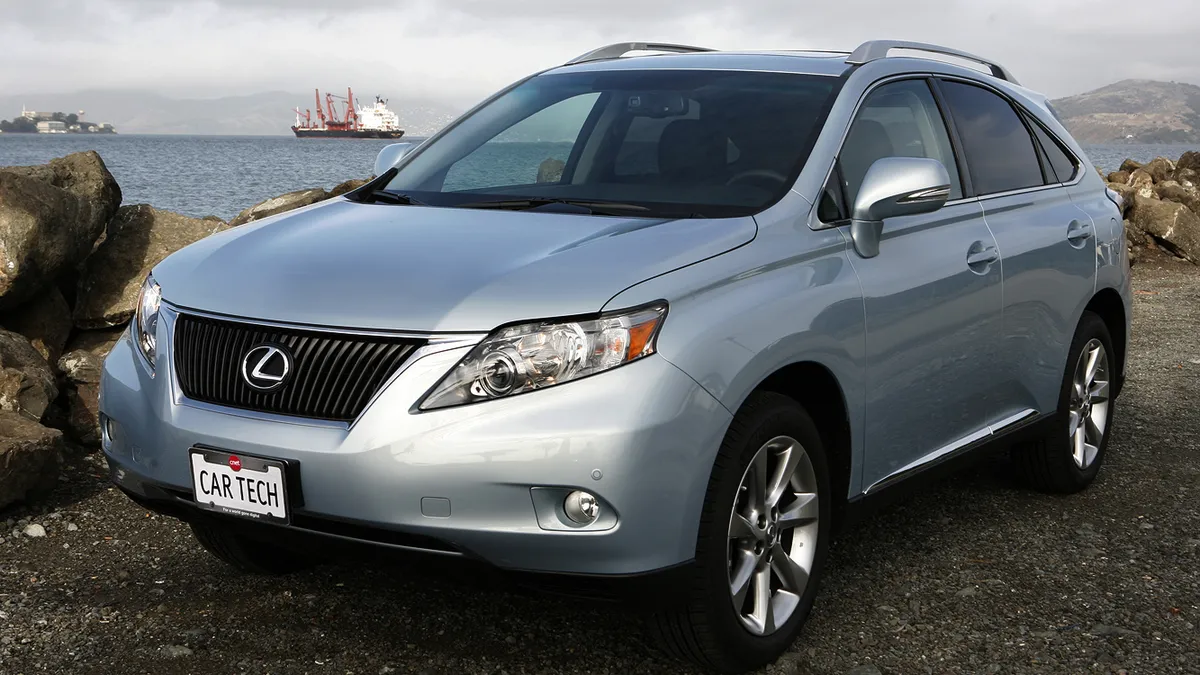
More problematically, the focus on nitrogen inflation often distracts from the far more important practice of regular tire pressure checks. Studies show that drivers who pay for nitrogen inflation often develop a false sense of security, checking their tire pressure less frequently because they believe the nitrogen eliminates the need for regular monitoring.
This behavior leads to worse average tire pressure maintenance than simply inflating with air and checking pressure regularly. The minimal theoretical benefits of nitrogen inflation are further diminished by practical considerations.
Most facilities that add nitrogen do not fully evacuate the original air first, resulting in a mixture that typically contains only 90-95% nitrogen not enough to provide even the small benefits that might come from pure nitrogen.
Additionally, when tires eventually need pressure adjustments, most consumers top off with regular air, quickly negating whatever marginal benefit the initial nitrogen filling might have provided.
The Lexus RX’s nitrogen tire inflation option exemplifies how some dealer-promoted fuel-saving technologies appeal more to marketing than meaningful efficiency improvement.
The minimal theoretical benefit is overshadowed by both the cost of the service and the potential to encourage less vigilant tire maintenance practices, which can decrease fuel economy over time.
5. Aftermarket Fuel Catalysts: Any Vehicle
Aftermarket fuel catalysts and fuel line magnets represent some of the most egregious examples of ineffective fuel-saving products, yet they remain perennially popular add-ons for all vehicle types.
These devices, variously described as “fuel energizers,” “molecular enhancers,” or “combustion catalysts,” claim to improve fuel efficiency by altering the molecular structure of gasoline or diesel fuel before combustion.
Typical products in this category include magnetic devices that clamp around fuel lines, catalytic tablets that dissolve in the fuel tank, or inline devices installed in the fuel system.
Manufacturers claim these products can improve fuel economy by 10-20% or more by “ionizing,” “restructuring,” or “clustering” fuel molecules for more complete combustion.
The scientific community has thoroughly debunked these claims. Controlled testing by the EPA, Federal Trade Commission, Consumer Reports, and numerous independent laboratories has consistently shown that these devices produce no measurable improvement in fuel economy.
In fact, the FTC has taken legal action against several manufacturers for making unsubstantiated efficiency claims. The pseudoscientific explanations typically provided by manufacturers demonstrate a fundamental misunderstanding of basic chemistry and physics.
Gasoline and diesel are complex mixtures of hydrocarbons, not simple compounds that can be “aligned” or “restructured” by passing near a magnet or mixing with catalytic materials at normal temperatures and pressures.
Some devices in this category may harm vehicle performance or damage fuel system components. Products that add substances to fuel can clog injectors or contaminate oxygen sensors.
Devices that restrict fuel flow may cause lean running conditions that can increase engine temperatures and potentially cause damage over time. The persistence of these products in the marketplace demonstrates how difficult it can be for consumers to distinguish between legitimate fuel-saving technologies and pseudoscientific claims.
The substantial placebo effect observed in user testimonials, where drivers believe they’re getting better mileage simply because they expect to further complicates the evaluation of these products.
Aftermarket fuel catalysts exemplify how the desire for simple, affordable fuel-saving solutions creates a market vulnerability that continues to be exploited despite decades of scientific evidence disproving their effectiveness.
Unlike legitimate efficiency technologies that undergo rigorous engineering development and testing, these products rely solely on marketing claims and anecdotal evidence while failing to deliver measurable benefits in controlled testing.
Also Read: 5 Vehicles With Great Crash Protection and 5 That Crumble

